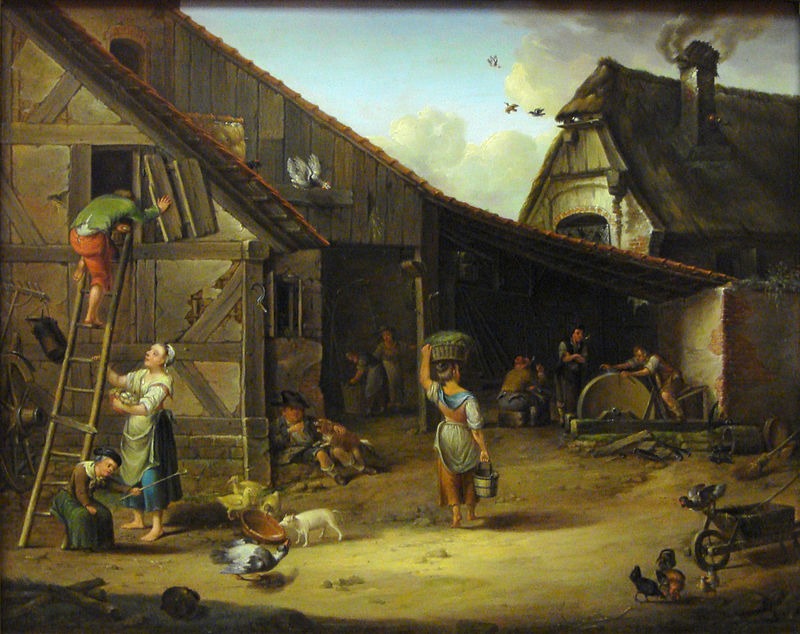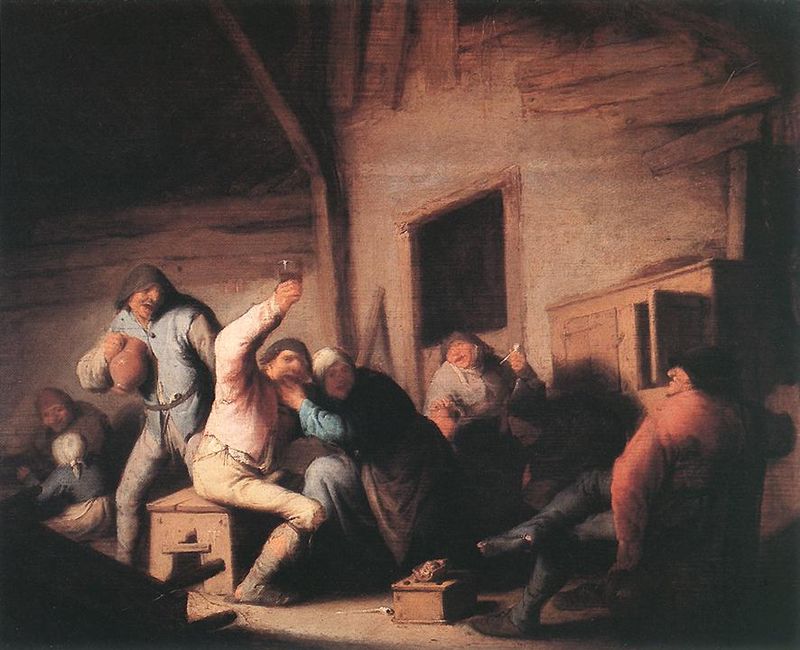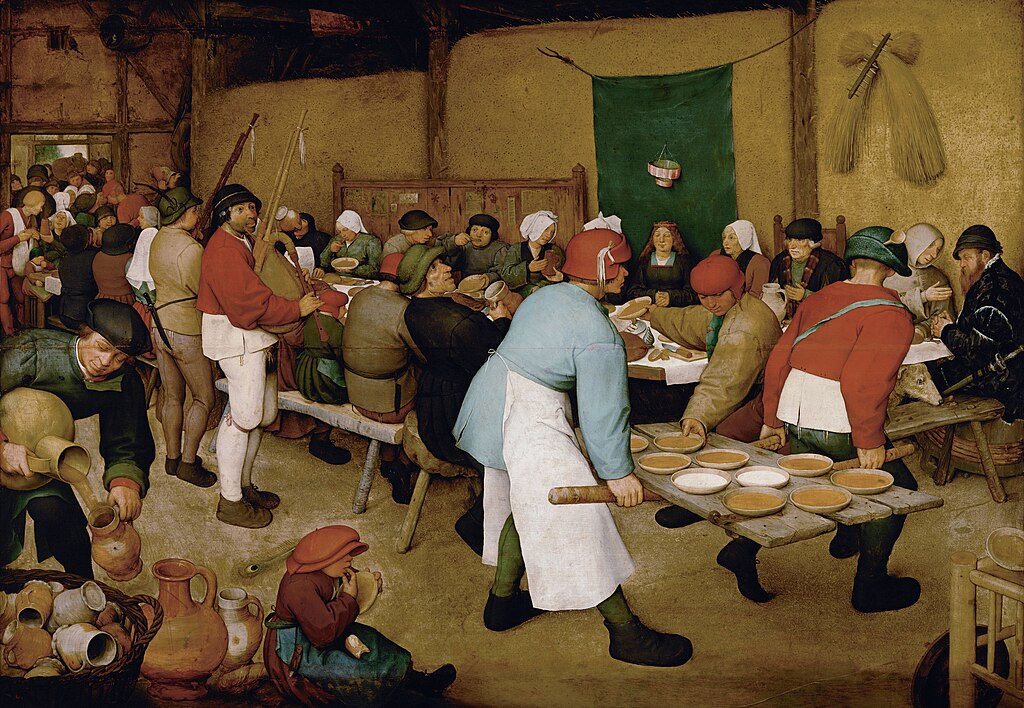Peasant life in England, spanning from the medieval period through the Tudor era, presents a tapestry of struggle, resilience, and community that shaped the backbone of English society. Life for these rural inhabitants was marked by hard labor, with their days governed by the seasons and the demands of the land they worked.
Despite the hardships, peasants developed a strong sense of community, relying on each other and the land for survival. This article takes a closer look at the daily lives of peasants, who formed the majority of the population, living under the feudal system that dominated England for centuries.
Who Were the Peasants in Medieval England?
In medieval England, peasants were the backbone of the rural economy, occupying the lowest tier in the social hierarchy of the feudal system. Their lives were largely defined by agricultural labor, with the vast majority working as farmers on lands owned by the nobility. Peasants were divided into different categories, with “villeins” or “serfs” being the most common. These individuals were tied to the land, unable to leave without the lord’s permission, and owed a significant portion of their time to work on the lord’s demesne—the part of the estate directly controlled by the nobility.
Despite their low social status, peasants played a crucial role in medieval society. They were responsible for producing the food that sustained the entire population, from the lowest rural dwellings to the king’s table. Their labor-intensive days followed the rhythm of the seasons—plowing in spring, harvesting in summer, and preparing for winter in the fall. The work was hard and unrelenting, but it was vital for survival.
The life of a peasant was not solely confined to agricultural toil. They were also part of a broader community, participating in local markets, festivals, and church services, which offered a respite from their daily labors and a chance to bond with fellow villagers. The church played a central role in their lives, providing spiritual guidance and serving as a place for social gatherings.
Additionally, peasants had their own small plots of land to cultivate for their families, growing vegetables and grains and raising animals to supplement their diet. This subsistence farming was crucial for their survival, especially considering the portion of their harvest they had to surrender as rent or tithe to their lords and the church.
Classes of Peasants
The peasant population in Medieval England was not a monolithic group but rather divided into several classes, each with distinct statuses, rights, and obligations. Understanding these distinctions is crucial to grasping the complexities of rural life and the feudal system that dominated the era. Here are the primary classes of peasants in medieval England:
- Serfs (Villeins): The majority of peasants fell into this category. Serfs were tied to the land, meaning they were not free to leave the manor or estate where they were born without the lord’s permission. They owed labor services to the lord, working several days a week on the lord’s lands. In return, they were allowed to farm certain plots of land for their own use.
- Freemen: A step above serfs, freemen had more rights and freedoms. They could own land outright or rent it and had the freedom to move as they wished. Freemen still owed services or rent to the lord of the manor but had a greater degree of autonomy compared to serfs.
- Yeomen: At the top of the peasant class, yeomen were prosperous farmers who worked their own land, which was often quite extensive. Yeomen could afford to hire laborers, and some even had serfs of their own. Over time, the yeoman class became a significant force in rural England, enjoying economic independence and some degree of political influence.
Each of these classes played a distinct role in the agricultural and social structure of medieval England. The rigid hierarchy dictated one’s work, lifestyle, and opportunities, shaping the lives of peasants from birth to death within the feudal system.
The Diet of Peasants in Medieval England
The diet of peasants in medieval England was largely dictated by their social status, the seasons, and the agrarian calendar, which determined the availability of food. Despite the variations in diet among different classes of peasants, there was a common reliance on bread, pottage, and ale, which formed the staples of their diet. Here’s an overview of what constituted the typical diet for peasants during this era:
- Bread: The cornerstone of every peasant’s diet was bread. Made primarily from rye or barley, bread provided the bulk of the calories in the peasant diet. Wheat bread, considered superior, was rare and usually reserved for the wealthier classes.
- Pottage: A type of thick stew made from oats, barley, or legumes, pottage was a dietary staple. It was cooked in a large pot over the fire, with ingredients varying according to what was available seasonally. Vegetables like onions, beans, peas, and leeks were common, with the addition of meats or fish when possible.
- Vegetables and Herbs: The medieval peasant diet included a variety of vegetables, such as cabbages, turnips, onions, and garlic. Herbs were also cultivated for flavoring food and for their medicinal properties.
- Dairy Products: Milk was not often drunk as a beverage due to preservation issues but was used to make butter, cheese, and other dairy products. These were a valuable source of protein and fat, especially in regions where livestock farming was prevalent.
- Meat and Fish: Consumption of meat was limited and typically reserved for special occasions. Pork was the most common meat, followed by beef, mutton, and poultry. Laws restricted hunting on royal and noble lands, limiting access to game for peasants. Fish, particularly herring and cod, provided an important source of protein, especially on Fridays and during Lent when the church forbade the eating of meat.
- Ale: Safe drinking water was not always available, making ale (which underwent a boiling process during production) a common beverage for all ages. It was less alcoholic than modern beers and was consumed daily.
- Seasonal Fruits and Nuts: Depending on the season, peasants could supplement their diet with fruits such as apples, pears, plums, and berries, as well as nuts like hazelnuts and walnuts.
The peasant diet, while monotonous by today’s standards, was designed to meet the basic nutritional needs within the constraints of medieval society. Festivals and religious feasts offered temporary respite from the daily diet, allowing peasants to enjoy a greater variety of foods.
Leisure Time of Peasants in Medieval England
Leisure time for peasants in medieval England was scarce, given the demanding nature of agricultural labor and the rhythms of the farming calendar. However, despite the hard work, peasants did enjoy moments of leisure, especially during religious festivals and market days. These occasions provided necessary respite and a chance to engage in social activities, fostering community bonds and offering a break from the monotony of daily toil.
- Festivals and Feasts: The medieval calendar was punctuated by numerous religious festivals, which often included feasts, dancing, and games. These events were eagerly anticipated by peasants as an opportunity to eat well, drink ale, and celebrate with neighbors. Christmas, Easter, and May Day were particularly festive times when work was set aside in favor of communal joy and celebration.
- Markets and Fairs: Market days and fairs were not only essential for trading but also served as important social gatherings. Peasants would travel to sell their produce, purchase goods, and catch up on news and gossip. Fairs often included entertainments such as jugglers, musicians, and games, providing a welcome diversion from everyday life.
- Sports and Games: Despite their limited free time, peasants enjoyed various forms of sports and games. Wrestling, archery, and stoolball (an early form of cricket) were popular among men, while children played with simple toys made from wood or bone. Games like chess and checkers were also known, though less common among the lower classes.
- Music and Dance: Music and dance played a central role in peasant leisure activities. Instruments like the flute, bagpipes, and drums were accessible and used to accompany dances during festivals and gatherings. Singing was another popular pastime, with folk songs passed down through generations.
- Storytelling: In an era when literacy was not widespread, storytelling was a vital form of entertainment and education. Tales of heroes, saints, and mythical creatures were shared around the fire, providing both amusement and a sense of shared heritage.
Peasant leisure activities in medieval England were deeply intertwined with the agricultural cycle and the church calendar, reflecting a life that was governed by the seasons and the land.
Conclusion
The life of peasants in medieval England was marked by hard work, resilience, and a deep connection to the land and the community. Despite the challenges posed by their low social status and the demands of the feudal system, peasants developed a rich culture that included festivals, sports, and storytelling, which provided vital outlets for leisure and social bonding. Their diet, though simple, was nourished by the fruits of their labor, and their daily routines were intertwined with the rhythms of the natural world and the agricultural calendar.




